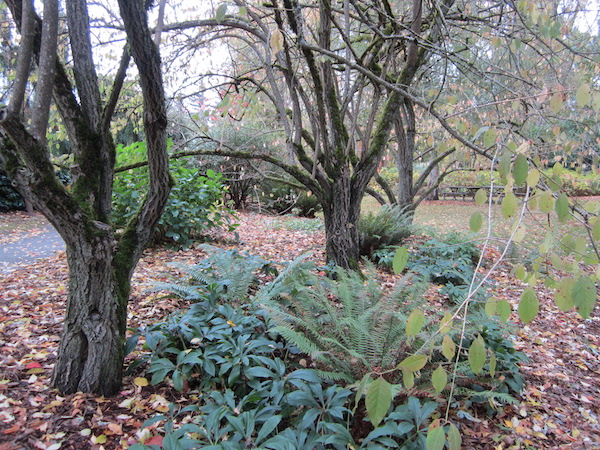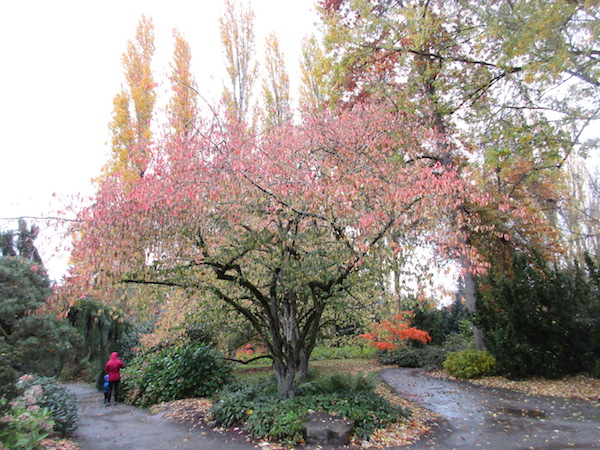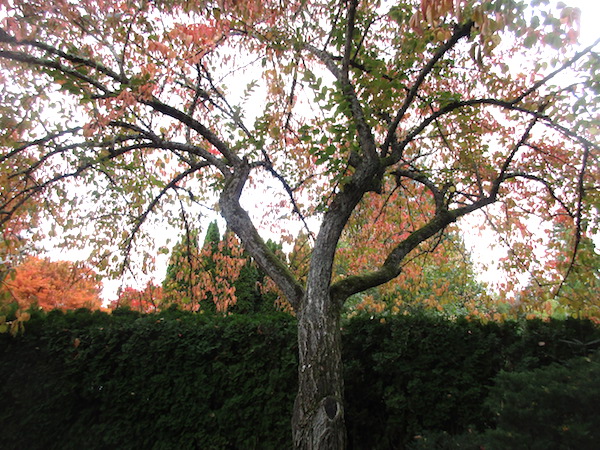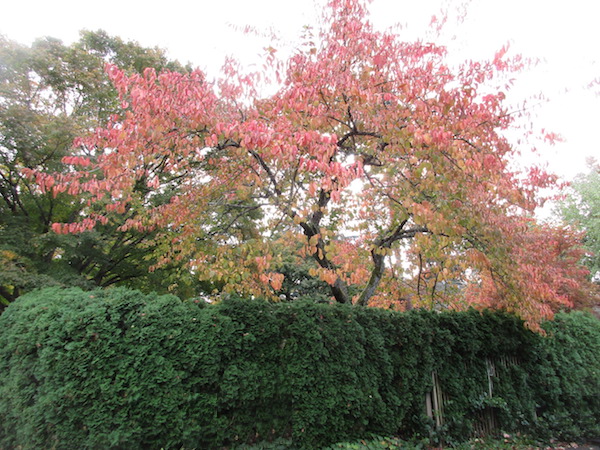Plant of the Month: December 2020
|
| Asian Spindletree |
| Euonymus Hamiltonianus Wall. |
| = Euonymus yedoensis Khne. |
| = Euonymus Sieboldianus Bl. |
| = Euonymus europæus L. var. Hamiltonianus (Wall.) Maxim. |
CELASTRACEÆ; Bittersweet Family
|
| In late October and early November, the Asian Spindletree can display lovely fall leaf coloration and reveal a handsome branching system. The tree is very rare in Seattle, and was given only a footnote in my book Trees of Seattle (page 373, second edition). Thus, this article supplies more data. |
| The genus Euonymus in general, has about 140 species in the north temperate zone, especially in E Asia; it also is present in Australia. All Euonymus are small trees (up to 80 feet tall), or shrubs, and a few are viny. They can be deciduous or evergreen, and frost-hardy or tender. Leaves are opposite, dull or shiny, toothed or not. Flowers are always small and rarely of beauty, they may smell unpleasant, but do produce plump little seedpods that can be showy as they burst open to reveal colorful seeds. Some species display pleasing, twisting branching, lovely foliage (fall color especially), or interesting green twigs. |
| The Asian Spindletree is native from Afghanistan to Japan & Burma. It has been cultivated in the West since the 1800s. In the wild, it is one of the most common species in the genus. It is highly variable. My remarks below refer to the version grown in and near Seattle. |
| The tree is best contrasted with the commonly cultivated european Spindletree, Euonymus europæus. The Asian differs in growing larger, with larger leaves, is less fruitful, less cold-hardy, more tardily deciduous, later to bloom, with purple or red anthers rather than yellow. |
| If grown in the open, the trees become wider than tall. The twigs are dull greenish. Little flowers in May are inconspicuous. Leaves measure up to 6 by 3 inches, their stems up to seven eighths of an inch long; their veins are minutely hairy beneath; their margins are toothed very subtly. The fruit capsules are pink, the seeds brown, with orange arils that do not 100% cover the seeds. (It can be hard to identify Euonymus species without seeing both flowers and ripe seedpods.) |
| As for size, Kubota Garden has three in a row, the largest 25 feet tall, 31 feet wide, its trunk 4 feet around. A specimen in a private garden in Seattle meaures 22 feet tall and 32 feet wide, its trunk close to 5 feet around. There is a specimen near Kirkland's Motel 6 that is similar in size. In China, trees have been noted over 60 feet tall. In England, a specimen at Wisley Garden in Surrey had a trunk about 2 feet thick in 2010. |
| It appears that the population of this tree present in Seattle is one clone, that fruits poorly or even scarcely at all, unless it were to be cross-pollinated by another clone. So, it can expect to remain rare, because although it is interesting and grown easily, it is not lovely enough to attract more attention and planting. As with human individuals, not all trees can stand out. |
Its wood is white, and can be carved into small items. The foliage is fodder for goats or cattle. Humans cook the tender young leaves as a vegetable. The season of tenderness is brief, and the flavor is bland.
Back |

Euonymus Hamiltonianus at Kubota Garden in 2012; photo by ALJ
|

Euonymus Hamiltonianus at Kubota Garden in 2020; photo by ALJ
|

Euonymus Hamiltonianus in a Seattle garden; photo by ALJ
|

Euonymus Hamiltonianus in a Seattle garden; photo by ALJ
|
|
|

